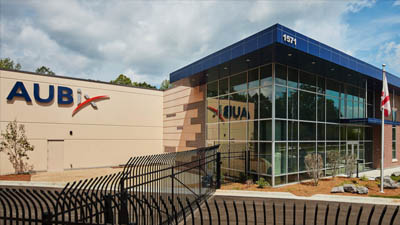In modern stadiums, the competition isn’t just on the field. In the battle for fan mindshare and dollars, venue operators are going up against the living room, 4K TVs, smartphones with live interactive stats, and all manner of personal digital devices and applications—all enhanced by social media. There’s still no substitute for the live fan experience. But, as applications like Facebook Live, and augmented reality change the way we watch sports, forcing spectators to choose between live action and the digital experiences they love is a losing proposition. Venue operators recognize this, and they know what they need to do: deliver lightning-fast, reliable Wi-Fi throughout the stadium, so that fans can bring the wide world of digital experiences along with them. Unfortunately, too many venues view this strictly on one side of the ledger: a necessary cost of doing business. In reality, the marriage of live in-stadium action with ubiquitous digital connectivity is a huge opportunity. By exploiting the full potential of outdoor access points and the stadium wireless infrastructure, venues can get fans more engaged, streamline facilities management and operations, enhance stadium security and tap into significant new revenue streams.
Get More from Stadium Wireless Infrastructure
The first step in capitalizing on stadium wireless infrastructure is to change the way you think about wireless connectivity. When venue operators link together devices, sensors, applications and people across the stadium over a common wireless infrastructure, the Wi-Fi network is no longer just a broadband amenity. It’s a platform for innovative Internet of Things (IoT) applications that can lower costs, increase efficiencies, generate revenues, and create a better fan experience. For example, when you combine wireless technologies such as Bluetooth® Low Energy beacons and/or ZigBee, coupled with local machine learning and cloud-based artificial intelligence (AI)—all connecting over high-performance outdoor access points—your IoT-enabled stadium’s wireless infrastructure becomes a strategic asset rather than just an expense. Your infrastructure can now be programmed to predict problems and take corrective action. Logical—and even physical—changes to the network can now be implemented automatically. Even more important, you can now collect and analyze huge amounts of data to better understand where people are going in the venue, what they’re doing, what they’re buying and when. Take a basic IoT example: using data and traffic trends to reduce heating, ventilation and air conditioning (HVAC) costs. We’ve all seen connected thermostat ads championing their ability to lower your monthly energy bill. In reality, the savings for an individual home may amount to a few dollars per month. In a large public venue spending thousands per day on environmental controls, however, even minor changes can have a huge financial impact. For example, one arena in Paris, France is using the Wi-Fi infrastructure to measure traffic and footfall analytics to pinpoint the optimal time to turn on HVAC systems in different parts of the stadium. As the stadium hosts events throughout the year, just knowing where and when to adjust environmental controls will drive significant energy savings.
A More Engaging Fan Experience
The same arena in Paris also plans to use its Wi-Fi infrastructure to support location analytics. After all, when a stadium is connected, the same wireless infrastructure delivering broadband can also now track where fans are and what they’re doing every moment they’re online. Using this data, the operator can create a precise picture of where traffic congestion is likely to occur, and when and why some concessions have longer wait times. Considering that the venue operator estimates that just 3-5 extra minutes of wait time can cut into food and beverage sales by as much as 20 percent, these data insights will have a direct impact on the bottom line. That’s just one use case, from one venue. There are many others. At an amusement park in Ohio, for instance, guests access the Wi-Fi from a captive portal that prompts them to use the venue’s app—increasing the likelihood of guests downloading it. This, in turn, gives the amusement park a new channel to engage with guests and better understand their behavior and preferences. Armed with more granular data about each guest, along with a direct communications channel, they can create customized campaigns tailored to individuals and exploit new opportunities for direct sales. A horse track in New York is using its app to take the in-venue fan experience even further. They’re using Bluetooth® Low Energy beacons to identify guests as they enter the gates and welcome them with a personalized message on their smartphones. The personalized messages alert guests to special events happening at the track that might interest them, based on their unique history and preferences. The app can even provide step-by-step directions to events in the venue, as well as back to each guest’s car after the races.
Getting Social
Social media is having a huge impact on sports—both in the stadium experience fans expect and the expanded reach of teams and leagues. In the past, the stadium was strictly for those with tickets. Today, fans use their smartphones and streaming services like Facebook Live to bring friends, family and the rest of the world into the fan experience. At a recent Grand Slam tennis tournament in Europe, for example, Ruckus tracked the top five applications used through Wi-Fi. Social media and photo sharing accounted for all five. Once again, venue operators should be looking at this as an opportunity, not just a cost. As fans share their experiences in the stadium, venue owners and teams have new digital avenues to market their product and reach new customers. The world really is watching. Of course, the other side of the equation remains true as well: Thousands of fans sharing video and pictures places heavy demand on the venue’s Wi-Fi—and you need to make sure you have the wireless infrastructure in place to support it. With so many eyes on the stadium, poor Wi-Fi performance will most definitely color the brand perception of the venue and event.
Are Your Outdoor Access Points Up to the Challenge?
These are just a few examples of how wireless technology can transform the stadium experience—for fans and venue operators alike. When device and machine data can be mined effectively, and information can be transmitted and shared on a converged intelligent network infrastructure in real time, countless new opportunities and experiences become possible. To capitalize on any of this, of course, you need the right foundation: a high-performance, highly reliable Wi-Fi infrastructure. Ruckus has been at the forefront of wireless innovations for over a decade, providing the industry’s most widely deployed outdoor access points and delivering lightning-fast speeds and rock-solid reliability in the toughest, highest-density RF environments. We’ve demonstrated in large public venues around the world that, with properly designed and engineered outdoor access points, along with new radio innovations like 802.11ac, even ultra-dense environments consuming terabytes of data per hour can bring fast, reliable Wi-Fi to their venues. Going forward then, the question isn’t whether Wi-Fi can deliver the experiences that fans want—it can. It’s what else can your wireless infrastructure do for your venue and your business? Find out more about Ruckus’ experience in Smart Stadiums at the upcoming Smart Infrastructure event on October 30th in Bristol. 


















